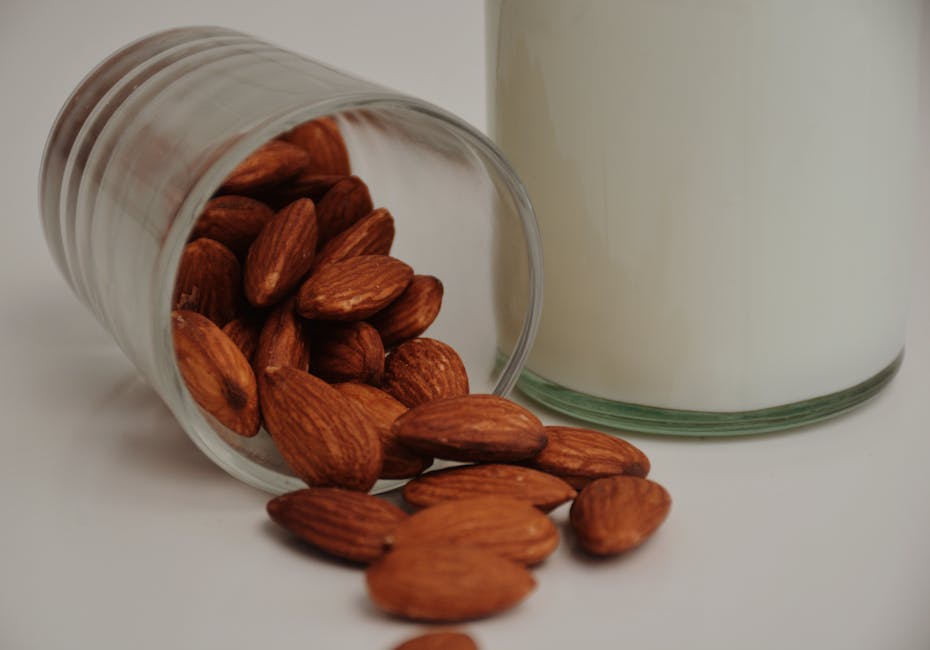To answer the question upfront—yes, you can safely freeze almond milk. However, there are several caveats and understanding the implications of doing so can make all the difference for culinary enthusiasts. We will delve into these aspects and additionally guide you on the when, why, and how of freezing almond milk, offering comprehensive insights based on research and user experiences.
Understanding Almond Milk
Almond milk is a plant-based, dairy-free milk substitute made from almonds and water. It has gained popularity for several reasons, the chief among them being its lower calorie count compared to cow’s milk, making it ideal for weight watchers. The absence of lactose also makes it a preferred choice for those with lactose intolerance.
Its nutritional value lies in its low-sugar, high calcium, vitamin E-filled profile, although it doesn’t pack a direct punch of protein as dairy milk does. Also, with flavors from sweetened to unsweetened and from vanilla to chocolate, almond milk catering to different taste profiles are available, further driving its adoption.
pow! Bonus tip: The flavored almond milk versions can add a unique twist to your recipes. For instance, try replacing regular milk in your coffee with vanilla almond milk for a latte-esque effect without the added sugar!
The Freezing Process of Almond Milk
Just like you’d freeze regular milk, almond milk can also be stored in a freezer-safe container and frozen. Securing the lid and leaving slight room for expansion are key steps.
The most common notable change post-freezing is the texture: almond milk tends to separate into a more watery layer and a thicker layer, giving it a slightly grainy texture after thawing. This tilt in texture is often unacceptable for those who enjoy it in its original silky, smooth form.
- Pros: It gives almond milk a longer shelf life, and can be used directly in cooking or baking without needing to thaw it first.
- Cons: The potential change in texture might make it less desirable for pure consumption, especially in cold foods or drinks where the texture is noticeable.
Thawing and Re-blending Almond Milk
Once you’re ready to use your frozen almond milk, thaw it by moving it from the freezer to the fridge—a slow thaw maintains its quality better. A quick shake to reincorporate any separation can work sometimes, but a re-blending provides a complete solution.
bling! Tools such as an immersion blender or a regular blender can help whip your thawed almond milk back into its silky texture.
Usage of Frozen Almond Milk
Despite the mentioned texture variations, there’s a universe of culinary delights where frozen and thawed almond milk can play the protagonist. In soups, curries, baking, and smoothies, it offers the same delicious results as fresh.
However, using it directly in cold beverages might not give an optimal taste due to texture changes post-freezing.
clap! Pro tip: In recipes where the texture of almond milk isn’t very noticeable—like batter for muffins or a base for a creamy soup—frozen almond milk does an ace job. Also, adding frozen almond milk cubes directly in your blender for a smoothie provides an icy, creamy base.
Stay tuned for alternatives to freezing and understand the almond milk’s shelf-life in the next part of the article.
Alternatives to Freezing Almond Milk
While freezing extends the almond milk’s shelf life, it isn’t the only available method. One basic option is simply buying smaller amounts of almond milk to ensure that it won’t go bad before you have a chance to use it.
Also, refrigerated almond milk can last up to two weeks after being opened if stored at or below 40 °F, allowing ample time for consumption in its fresh state.
| Fresh Almond Milk | Frozen Almond Milk | |
|---|---|---|
| Taste | Original flavor remains intact | Possible change in flavor |
| Texture | Silky and smooth | Possible-grade texture after thawing |
cheers! Pro tip: The first sign of almond milk spoilage is a sour smell, so always ensure to check before consumption.
Lastly, the types of consumers make a difference too. If you’re the kind of person who uses almond milk daily, buying fresh and consuming before the sell-by date is the ideal scenario. If you occasionally need almond milk in your cooking or baking process, freezing and extending the shelf life make sense to reduce wastage.
Remember, safely using almond milk requires a good grasp of freezing, thawing, and understanding its adaptable usage. So fear not, experiment, and enjoy the culinary adventures with almond milk.
Quick Checklist Before Freezing Almond Milk
- Use a freezer-safe container with enough space for the almond milk to expand.
- Securely tighten the lid to prevent any spillage.
- Mark the date of freezing to keep track of its duration.
- For thawing, transfer the almond milk from the freezer to the fridge.
- Post thawing, use a blender to restore the original texture.
- Consume thawed almond milk within a few days for optimum flavor.
- Remember, frozen almond milk is great for cooking, baking, and smoothies.
- Check for any signs of spoilage before using the almond milk.
Keep this checklist handy to make your almond milk freezing process smoother and more efficient.
Key Takeaway:
- Almond milk can be frozen safely, though its texture post-thawing might change slightly, with potential separation into thicker and watery layers.
- Frozen almond milk is great for cooking, baking, or blending into smoothies but might not be ideal for use in cold beverages or direct consumption due to texture changes.
- Thawing in the fridge and re-blending can restore its original texture to a large extent.
- Buying smaller quantities and consuming almond milk before the sheer by-date is an alternative to freezing.
- Regularly checking for signs of spoilage (sour smell) is necessary.
Remember, freezing almond milk is a practical solution for extending its shelf-life and reducing wastage, especially for occasional users. Thawing and re-blending can largely restore the original texture, making it practically usable in many culinary applications. Fear not to experiment and enjoy the culinary adventures with almond milk.
FAQs
Q: Can I freeze almond milk in its original packaging?
A: Yes, but it’s crucial to ensure there’s some room for the milk to expand during the freezing process to prevent leakage or bursting of the container.
Q: Does frozen almond milk retain the same nutritional value post-thawing?
A: Yes, freezing almond milk does not significantly alter its nutrient content. However, some slight losses in water-soluble vitamins may occur during freezing and thawing.
Q: Does almond milk curdle when frozen and thawed?
A: While almond milk may not curdle in the traditional sense as dairy milk does, it can separate into a watery layer and a thicker layer, giving it a slightly grainy texture post-thawing.
Q: Can I drink almond milk straight after thawing?
A: Yes, it’s perfectly safe to drink almond milk after thawing, but due to texture changes, it might not give the most optimum taste. It’s best suited in culinary applications like cooking, baking, and blending.
Q: How long can I store frozen almond milk?
A: Ideally, frozen almond milk should be consumed within 1-2 months for the best quality. Thawed almond milk should be used within a few days.
Consider sharing this article with your friends and exploring more helpful posts on our website!






